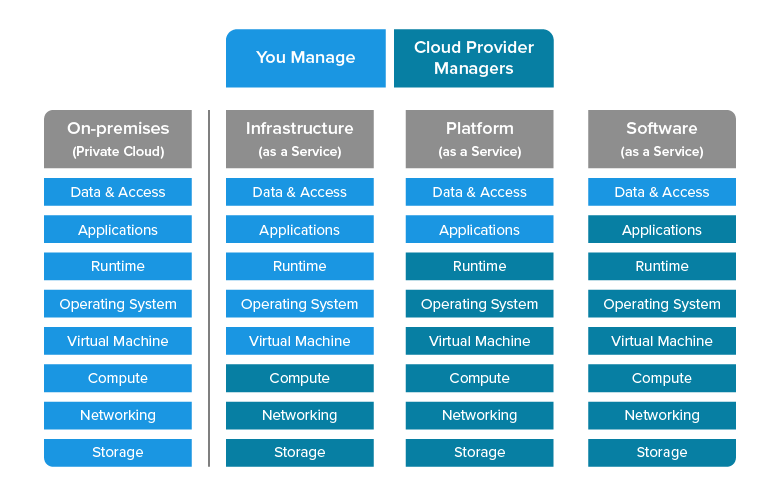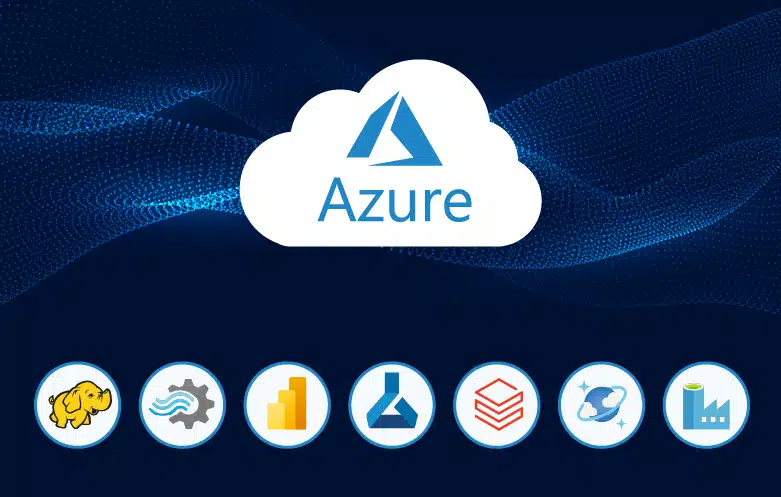Cloud computing has become an essential tool for businesses, offering increased flexibility, reliability, and efficiency compared to traditional on-premises IT infrastructure. Microsoft Azure stands out as a popular cloud service provider, due in part to its compatibility with various operating systems and applications. However, navigating the different cloud service models offered by Azure can be complex. This article clarifies the distinctions between Infrastructure as a Service (IaaS), Platform as a Service (PaaS), and Software as a Service (SaaS) within the Azure ecosystem.
As we move towards 2024, worldwide spending by businesses on cloud computing infrastructure is forecast to top $1 trillion for the first time. Microsoft Azure is certainly no exception — over 56% of organizations worldwide, and 95% of Fortune 500 organizations use Azure cloud services.
Azure: A multi-faceted cloud platform
Microsoft Azure stands out as a leading cloud service provider, offering a comprehensive suite of services encompassing all three cloud service models:
IaaS on Azure:
Azure provides a wide range of virtual machines catering to diverse needs. Storage options include Azure Blob Storage for unstructured data, Azure Files for file sharing, and Azure Disks for high-performance block storage. Networking solutions like Azure Virtual Network enable secure communication between resources within the cloud. Additionally, Azure Container Instances offer a lightweight approach to deploying containerized applications.
PaaS on Azure:
Azure offers popular PaaS services like Azure App Service, a platform for building and deploying web applications and APIs. Azure Functions allow developers to write code snippets triggered by events, simplifying serverless application development. Azure Logic Apps provide a visual interface for automating workflows by integrating various cloud services and applications.
SaaS on Azure:
Azure boasts a vast collection of SaaS offerings, including:
- Microsoft 365: A comprehensive suite of productivity and collaboration tools encompassing applications like Word, Excel, PowerPoint, and Teams.
- Dynamics 365: A customer relationship management (CRM) solution that streamlines sales, marketing, and customer service operations.
- Power BI: A business intelligence platform for data visualization and interactive reporting.
Why choose Azure?
- Global reach: Azure’s extensive global network of data centers ensures high availability and performance for geographically dispersed users.
- Compliance certifications: Azure adheres to various industry regulations (e.g., HIPAA, PCI DSS) and compliance standards, crucial for businesses in sensitive sectors.
- Active directory integration: Azure seamlessly integrates with existing on-premises Active Directory infrastructure, simplifying user management and access control.
- AI and machine learning services: Azure integrates with powerful AI and machine learning services like Azure Cognitive Services. This empowers businesses to leverage these technologies for advanced data analysis, automation, and development of intelligent applications.
Azure data migration strategies for SaaS apps
Transitioning SaaS applications to the robust Azure cloud can unlock a treasure trove of benefits – enhanced scalability, improved security, and cost optimization. However, navigating the migration process can seem daunting. This guide unveils the four key strategies offered by Microsoft Azure for migrating SaaS data:
1. Rehost (lift and shift): A swift and secure ascend
- Ideal for: Legacy applications and teams new to Azure.
- The process: Migrate the application “as-is” from the on-premises environment to the cloud, preserving the existing codebase.
| Pros | Cons |
| Speed and simplicity: A quick and straightforward migration with minimal disruption to the application. | Limited scalability: Applications might not fully leverage the cloud’s potential for scaling up or down. |
| Reduced risk: Lower chance of introducing errors compared to more complex methods. | Resource inefficiency: Existing code might not be optimized for the cloud, potentially leading to underutilized resources. |
2. Refactor (repackage): Modernize the infrastructure while maintaining momentum
- Ideal for: Mission-critical applications requiring infrastructure upgrades while minimizing downtime.
- The process: Make minor code modifications to enable the application to leverage Azure services like Azure Container Services and Managed SQL Database instances.
| Pros | Cons |
| Quick and cost-effective: A relatively simple upgrade compared to a complete rebuild. | Limited cloud optimization: Significant design changes are not implemented, potentially hindering maximum cloud benefits. |
| Infrastructure modernization:: Introduce DevOps practices and containerized deployments. |
3. Rearchitect (redesign): Reimagine the app for peak cloud performance
- Ideal for: Applications demanding maximum flexibility, scalability, and agility in the cloud.
- The process: Rewrite the application code to leverage a cloud-native architecture, fundamentally transforming it to thrive in the Azure environment.
| Pros | Cons |
| Ultimate cloud optimization: An application built to fully exploit Azure’s capabilities – highly scalable, resilient, and readily deployable. | Complexity and cost: A resource-intensive process with a higher risk of errors and potential downtime during initial implementation. |
| Future-proofing: Prepare the application for future growth and evolving cloud technologies. |
4. Rebuild (reimagine): Craft a brand new cloud-native experience
- Ideal for: Simple, non-critical applications with minimal dependencies.
- The process: Completely replace the existing application by building a new one using Azure PaaS (Platform as a Service) features. Leverage Azure services like Functions and Logic Apps for the application layer and Azure SQL Database for data storage.
| Pros | Cons |
| Cost-effective: Eliminates licensing hassles and reduces reliance on legacy infrastructure. | Potential loss of functionality: Rebuilt applications may not offer all features of the original. |
| Modernized functionality: Benefit from the latest Azure services and avoid carrying over outdated code. | Strategic rebuilding: Careful evaluation is needed to determine which components can be effectively rebuilt within the Azure environment. |
Cloud as a service: Choosing the right service model
The ideal service model depends on specific needs and technical expertise:
- IaaS: Suitable for organizations with experienced IT staff requiring granular control over their infrastructure.
- PaaS: Ideal for businesses seeking to accelerate development and reduce infrastructure management complexity.
- SaaS: Perfect for accessing pre-built applications without the burden of software management.
Choosing the right Azure service for scalability and cost savings
By understanding these data migration strategies and carefully evaluating your application’s unique needs, you can confidently embark on your Azure migration journey. Microsoft provides a wealth of resources to help you on your journey, but having an expert Azure cloud consulting provider can be your helping hand every step of the way.
At Softweb Solutions, we’ll make sure to carefully analyze your requirements and give you the apt solution accordingly.




